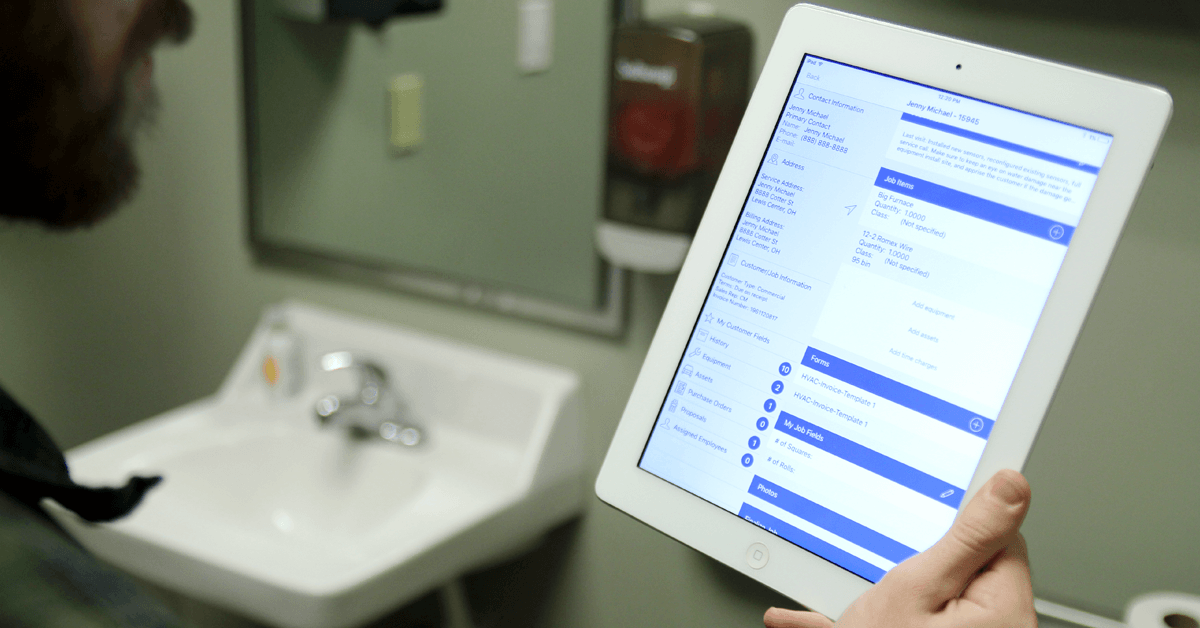How to Create a Plumbing Invoice
By My Service Depot on Wednesday, November 7, 2018Find out how to create a plumbing invoice and what to include in the document itself.
Without invoices, you won’t stay in business for very long! A business is only as effective as its ability to bill customers and receive payments for services. A good invoice, fundamentally, gets you paid quickly and communicates to your customers the value and worth of your services. Every plumber needs to get paid, so every plumber needs an invoice. It’s pretty simple.
What isn’t always so simple is how to invoice. In this article, we’ll provide guidance on what good invoices should look like and how you can create and deploy your own.
What is a plumbing invoice?
An invoice is a document itemizing the services you’re billing for and specifying payment terms. Invoices should be clear, complete, and detailed enough that your customers know at a glance what they owe, why, and how to make payment. Some professionals also call this a bill, receipt, or sales invoice, but all these things share the same definition: the document holding your payment terms and giving your customer all the information they need to reimburse you for your work.
What should a plumbing invoice include?
Your invoice should include everything your customers need to know in order to pay their bills. It should answer the main questions someone would have about how, what, when, where, and whom. In other words, you’ll need to address each of these on your invoice:
- Payment Methods: What payment types do you accept? Do you offer a payment plan, accept cash only, or use a credit and debit card processor?
- Amount Due: How much does the customer owe you? Do they have a past balance that’s also due?
- Itemized Details: What work was completed, exactly? Which parts were replaced? How long were technicians onsite? What was done? Be specific about what you’re billing for.
- Due Date: When is the balance or first payment on the account due? Do you have a grace period before late fees accrue?
- Your Company Contact Info: Who should your customer contact with questions or with their payment? Provide an address or website where customers can submit their payments, as well as a means of reaching your office with any questions they have.
- Payment and Billing Terms: Do you charge late fees? Does it cost more to your customers if they decide to pay with a credit card? Is there a fee for returned checks? Spell out your payment and billing terms clearly so your customers know exactly what to expect.
If there’s other information your customers need to know about paying for your services, add it to your invoice. We recommend you include these elements on your invoices as well. These additional elements are helpful for documentation and make your business look more professional:
- Before and After Photos: Showing customers photographic proof of your work serves as a good business practice. Before and after photos allow your technicians to document their work. It also protects you from liability.
- Invoice Numbers and Purchase Order Numbers: For your own records, organize your invoices and purchase orders. Each separate invoice should have its own number and each incident should have a separate purchase order number. This means some purchase orders can have more than one invoice, although you’ll probably just keep it simple with a single invoice for each incident.
- Header and Branding: Customize your invoice with your own logo, contact information, website address, and other brand-specific design and info.
- Signatures: Having your customer sign the invoice provides you with documentation acknowledging their receipt of your invoice. It also creates a contract with you—convenient, right?
Creating Your Own Plumbing Invoices and Forms
Want to make your own invoice? Here’s how to make an invoice professional and legal enough to actually use. Believe it or not, there are a lot of free form templates online that work perfectly well for use in your business. All you have to do? Customize them to fit your company. (Of course, depending on the form, you may also want to consult with a legal or business professional to make sure your form does everything it needs to and has the right legal language and details.)
Follow these steps to create your own simple invoice:
- Figure out what you need on your invoice. You may want to consider the elements discussed above.
- Using word processing software (such as Google Docs (FREE!) or Microsoft Word), type and/or copy and paste from a template any text you need in your invoice.
- Save the document as a PDF.
- Print as many copies as you need.
As your business grows bigger, so too will your need for invoices (and, generally, new paperwork of every kind). If you feel overwhelmed by the idea of creating your own invoice or work order, consider adopting plumbing software that can do all the heavy lifting for you. A lot of field service management software options, like Smart Service, offer full PDF integration, as well as built-in digital work orders/invoices. While it always pays to learn a new skill, using software can let you put your paperwork needs on autopilot and allow you to concentrate on growing your business.


